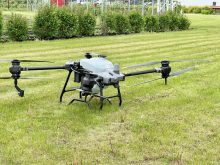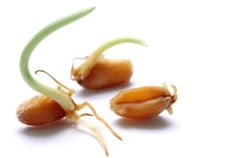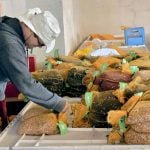The Bruner’s spur-throat grasshopper, typically found at higher elevations, becomes more abundant in northern Alberta
Grasshoppers are seen as a traditional southern prairie pest, but alfalfa and canola crops in the Peace Country are facing a threat from a non-traditional species of the insect.
“The interesting thing for producers about this grasshopper is it’s not a normal prairie grasshopper,” said Dan Johnson, professor at the University of Lethbridge specializing in entomology.
The Bruner’s spur-throat grasshopper usually isn’t an issue for producers. It is usually found in higher elevations in the foothills and Cypress Hills, but Johnson said his recent research sponsored by the Canadian Agricultural Partnership has revealed more about the species.
Read Also

More factors affecting winter weather
When you combine a weak La Niña, early Siberian snow, and a warm northern Pacific, it’s easy to see why long-range winter forecasting is so complex.
That includes an apparent increase in numbers on farms located near the Peace River.
Farmers in the Peace Country haven’t had to deal with the grasshopper pest historically with outbreaks usually confined to grasslands regions, said Johnson, but that reprieve appears to be shifting in the last decade.
Particular to the Bruner’s grasshopper is it doesn’t feed on cereal crops and its population numbers don’t appear to be tied to weather.
Johnson said the species appears to be on a two-year outbreak cycle with variances irrespective of any environmental conditions.
“Those relationships don’t apply,” said Johnson of the species’ relationship with moisture or dry conditions. “They are flipped around, they are random, they are completely changed and you have this two-year, up-and-down cycle that doesn’t seem to make much sense.”
Johnson said his research is attempting to nail down what is driving the Bruner’s population cycle.
He said there also appears to be a divergence of the species because it doesn’t travel well across open territory with Bruner’s found in isolation in the Cypress Hills possibly acting differently than those found in the Peace.
“Sometimes when (populations) drift apart, it doesn’t matter, they respond to pesticides in the same way,” said Johnson. “But in other insects, if they drift apart, they start to act like a different beast.”
He said his research is looking to establish a baseline of the species to better understand the Bruner’s characteristics.
That includes establishing what vulnerabilities the grasshopper might have to parasites.
Johnson said for most prairie grasshopper species, two to 10 percent of samples reveal parasites that can help lower populations. That number can be as high as 50 percent some years.
“But, of the 700 of the Bruner’s I brought back to Lethbridge and examined for parasites, there was not a single one,” he said.
That’s one of about a dozen factors that Johnson said could affect a grasshopper species population variance.
Those factors include DNA and behaviour analysis comparing northern and southern Alberta populations and field observations on feeding in an effort to get better predictive tools to determine populations, hatch and growth rates.
The study won’t be determining economic thresholds or pesticide resistance.
As for impacts of Bruner’s grasshoppers on cereal crops, Johnson said it’s minimal with the species in such fields usually only found on thistle between the rows.
Regarding the threat to southern prairie farmers of the Bruner’s, “they don’t have to worry about another grasshopper coming on the scene; the ones that we have are bad enough,” said Johnson.
















